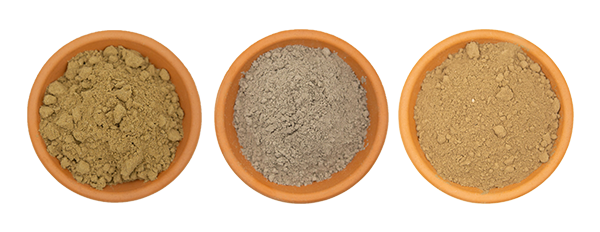There are 13 mineral nutrients that are essential for completion of a plant's life cycle. Macronutrients are required in large quantities: nitrogen, potassium, phosphorus, calcium, magnesium and sulfur.
Micronutrients are required in low concentrations: iron, manganese, zinc, copper, molybdenum, boron, chlorine. All of these nutrients should be provided in the hydroponic nutrient solution, in the right concentrations, and in adequate ratios.
According to the law of limiting factor, if one nutrient is deficient, other nutrients cannot compensate for the deficiency and the crop may suffer, resulting in decreased quality and yield.
Nitrogen, Phosphorus and Potassium
Most water sources contain only small amounts of these nutrients, if at all, so they must be provided in the hydroponic nutrient solution using fertilizers. Commonly used soluble fertilizers are MAP, potassium sulfate, ammonium nitrate and potassium nitrate.
Calcium and Magnesium
These nutrients are usually found in source water, sometimes in adequate concentrations for plant needs, especially in well water. If the concentration is higher than required, the source water should be pre-treated.
Calcium nitrate is the only fertilizer appropriate for adding calcium to a hydroponic nutrient solution. Magnesium nitrate and magnesium sulfate are both appropriate sources for a magnesium addition. Note that calcium nitrate and magnesium nitrate also contribute nitrogen to the hydroponic nutrient solution.
Sulfur
Sulfur is present in a wide range of concentrations in various water sources, and plants grown in hydroponics can tolerate a relatively high concentration, but an excess of sulfur might have untoward effects and even limit nitrate uptake.
Micronutrients
Iron, manganese, zinc and copper can be provided in the sulfuric form, but their availability is greatly decreased in pH levels greater than 6.5. The chelated forms may also be used because they are available for uptake in a wider range of pH. Some growers regard EDTA as harmful for plants, and avoid its use.
Molybdenum is usually provided using sodium molybdate. The presence of sodium in this fertilizer should not be a cause for alarm. Because molybdenum is needed in minute quantities, small amounts of this fertilizer are usually used, and the sodium addition is negligible.
Boron can be provided through boric acid or solubor. Solubor also contains sodium, but quantities are small enough so as to not have a significant effect on the sodium concentration in the solution. The adequate boron level range is narrow—between 0.2 and 0.5 ppm—and can easily be missed, resulting in either deficiency or toxicity, so boron supplements should be carefully added. Well water often contains sufficient boron levels, so no boron addition is needed.
Harmful Elements
Chloride is required by plants in minute quantities and most water sources contain a chloride concentration well above what plants require, so chloride deficiency is extremely rare. Chloride-related problems are more commonly those of toxicities rather than of deficiencies. Therefore, using fertilizers that contain chloride is uncommon in hydroponics.
Sodium can be harmful in recirculating systems, since it builds up with time in the hydroponic solution. Threshold concentration of sodium and chloride for most hydroponically grown plants is 75 ppm.
Nutrient Balance
Several nutrients compete with each other over uptake by the plant, so keeping adequate ratios is important for avoiding deficiency. For example, excess of potassium competes with calcium and magnesium absorption. A high iron/manganese ratio can result in manganese deficiency, and high sulfur concentration might decrease the uptake of nitrate.




.jpg)